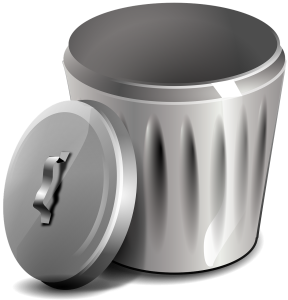Introduction

Have you ever heard the expression “Garbage in, garbage out”, which is sometimes shortened to GIGO? It comes from computer science and it refers to the idea that if you provide nonsense input data to a computer program, then the resulting output data will be nonsense too. After all, computers are not actually smart and so they won’t fix up your flawed input. Instead, a computer will simply process the data that you supply. And if you supply nonsense or “garbage”, then all you get in return is more “garbage”. This same principle applies to writing.
Maybe you’ve had the experience of reading a set of instructions that was poorly written. Perhaps it contained some typos or some sentences that didn’t follow the usual rules of grammar. Some parts might have been ambiguous (for example, a word with more than one meaning) and you weren’t sure which interpretation was the correct one. You probably had to read the instructions more than once to try to puzzle out what you were expected to do, and maybe you even ended up doing the wrong thing. This type of experience is certainly frustrating!
Example: Disconnect port and drain lines.
This sentence could mean:
- Disconnect the port and disconnect the drain lines; or
- Disconnect the port lines and disconnect the drain the lines; or
- Disconnect the port and then drain the lines.
Now imagine that you had to not only read and understand the text but also translate it. If a text is not clear in the original language, how likely is it that the intended meaning will be successfully transferred into another language? Spoiler alert: it’s not very likely! Translation is a complex task, and the “garbage in, garbage out” principle applies here too. In order to obtain a useful translation, you need to start with a text that is clear and translation friendly. The main goal of this Open Educational Resource (OER) is to help you to learn how to prepare translation friendly texts.
Why is this OER needed?
Many texts end up being translated. However, most writers do not specifically formulate their texts with translation in mind. Rather, translation is carried out as a completely separate process – sometimes as an afterthought – and translators simply have to work with the texts that they are given, whatever state they may be in! As a result, translation is often an unnecessarily challenging and time-consuming task. Projects are held up “waiting for the translation”, and they may also run over budget when the translation costs are higher than expected. Sometimes, the translation may even be of a lower quality because the original text is ambiguous or poorly constructed, leading to misinterpretations. This can happen when the translators are highly trained professionals, and it is even more likely to happen when the text is translated by an automatic translation tool (for example, Google Translate, DeepL Translator or Microsoft Translator) – a solution that is being used more and more often. A key way of improving the output of the translation process is by improving the input (i.e., the original text). This entails learning how to write with translation in mind and crafting a text in such a way as to maximize its translatability.
Who is this OER for?
This OER is intended primarily for anyone who works in a bi- or multilingual environment where texts are going to be translated into another language. For instance, you might work at a bilingual institution such as the University of Ottawa or the Government of Canada, where most communications are provided in both English and French. By preparing your texts in a translation friendly way, you can help to ensure that the message will be clear to speakers of both languages.
But this OER can actually be helpful for anyone who writes texts, even if it’s not in an organization that specifically aims to serve people in more than one language. Nowadays, it is not always possible predict whether a text will be translated. You might think that you are preparing a text for readers who speak one particular language (for example, English), but if that text is posted on a website, then a reader who is less comfortable in English could choose to translate it into their dominant language using a free online automatic translation tool, such as Google Translate, DeepL Translator or Microsoft Translator Once a text has been written, there is always a possibility that it could be translated, so why not prepare it in a translation friendly way from the outset? Since translation friendly writing aims to be clear and unambiguous, your text will also be reader friendly. Win-win!
What’s in this OER?
To help you prepare translation friendly texts, this OER will provide some information about what’s involved in the translation process, how human translators and automatic translation tools differ, and what techniques you can use to make your text more translation friendly. Of course, this short OER will not turn you into a professional communicator. Professional writers hone their craft through extensive training and experience. However, this OER can help you to avoid some of the common pitfalls that make texts difficult to translate. In other words, it will help you to take out some of the “garbage”.
It’s also important to note that even if a text is written in a translation friendly way, this does not necessarily make it a good candidate for automatic translation. The decision about whether or not a text should be translated by a professional translator or a computer tool depends on other factors too, such as the purpose of the text, the language combination and subject matter, and the level of quality needed. Developing your judgement about whether and when to use an automatic translation tool involves developing machine translation literacy skills, and this OER will help you to do that also.

So are you ready to take out the garbage? Let’s get started!
This OER is also available in French: Médiocre à l’entrée = médiocre à la sortie!

